25 Smart Storage Solutions to Combat Clutter
Overwhelmed by stuff? Cut down your clutter with these easy tips designed to help you streamline your storage, get organized, and destress.
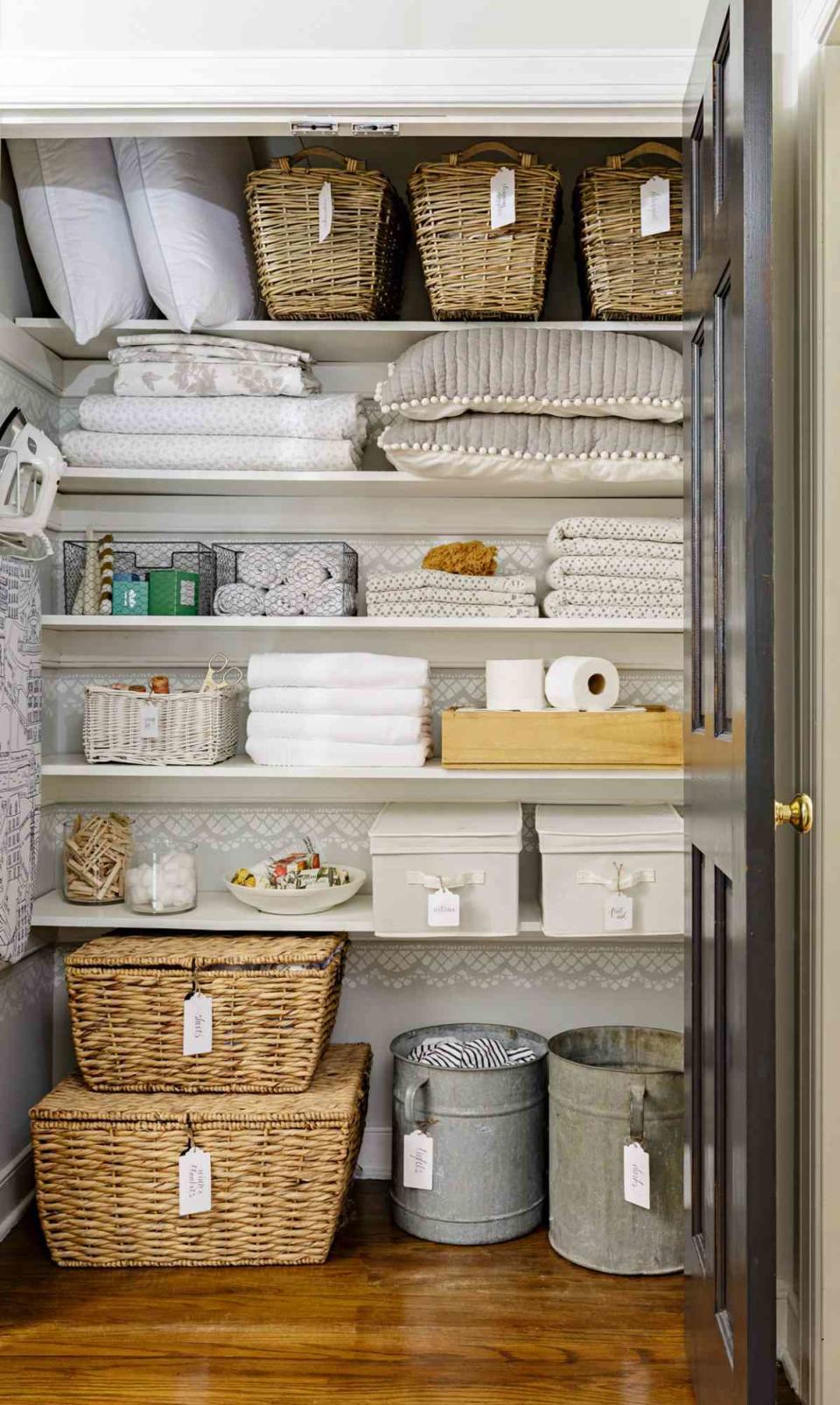
Open your closest closet. What do you see? If the answer is a jumble of stuff, with no rhyme or reason behind each item's location, you might have an organization problem. No need to stress: We're here to help you transform that closet—and the rest of your house—with 25 easy strategies for streamlining storage and organizing your home's problem areas. Don't be surprised if some of your mental tension evaporates as the clutter clears.
Measure Before You Buy
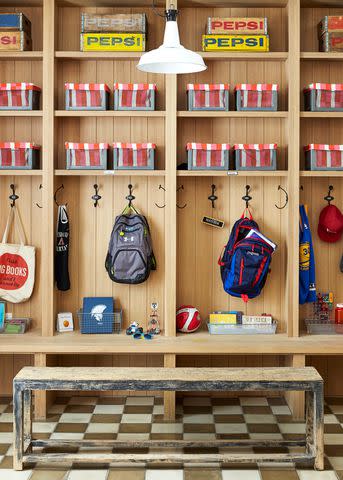
If you think your first task is buying baskets and bins, reconsider your decluttering priorities. "Too many people shop for containers first, figuring that will make it easy for them to get organized," says Sharon Lowenheim, a New York City organizer. "But it's rarely true. All they end up with is more clutter because their empty containers are taking up space." Determine what items you need to store, how much space they will take up, and the size of the space where they're going to be stored. Then buy storage containers accordingly.
Shop Dollar Stores
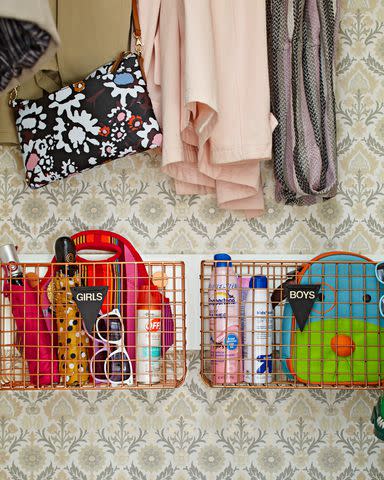
Head to dollar stores for inexpensive storage bins and baskets, and buy a bunch in the same color. Displayed in multiples, monochromatic plastic or cloth bins look restful and organized. Plus, they offer tons of storage for a range of hard-to-organize items, including toiletries, accessories, toys, and sports equipment.
Ask the Honest Closet Questions
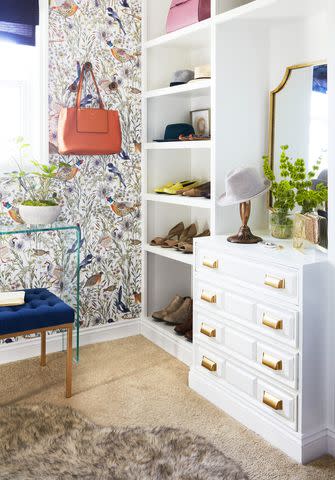
Resist the "I might wear it eventually" mentality. Instead, take a hard look at your wardrobe. "Fluctuating waistlines, happy memories, and sentimentality keep us holding on to items longer than we should," say Sarah Welch and Alicia Rockmore, authors of Pretty Neat. Their simple solution: Place a large cloth bag on the floor of your closet. Each day, ask yourself three questions about one piece of clothing: (1) Is it flattering? (2) Do I love it? (3) Does it represent who I am today? If the answer to any of these questions is "no," toss the item into the donate bag.
Make Storage Accessible for Kids
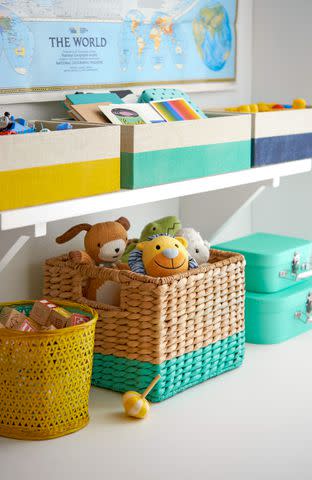
Lots of bins may seem counterintuitive when you're decluttering, but in some cases, the more the better. For example, in kids' rooms, having several smaller bins designated for specific types of toys makes it easy for kids to find that one little item more quickly. Translation: This storage solution can keep them from dumping a large container of miscellaneous toys when they're on the hunt.
Organize Your Junk Drawer
Did you know it's actually smart to have a junk drawer? It serves as a catchall for those little odds and ends you know you'll need at some point. But junk doesn't have to mean chaos. Watch and learn how to keep your junk drawer organized.
Declutter Your Nightstand
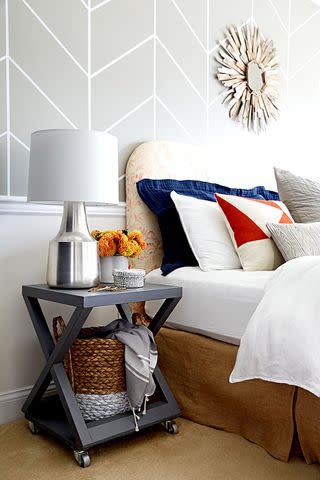
Make your nightstand a clutter-free zone. Limit yourself to a reasonable number of books (stacked neatly!), and add a tray to hold change and jewelry. If you have open space below, slide in a basket for blankets or magazines. Not only will your bedroom look more beautiful, but you won't wake up to a mood-wrecking mess.
Organize Your Linen Closet
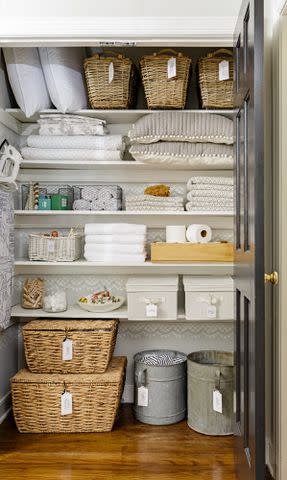
Is your linen closet overflowing? Pare down your stockpile to three towels and washcloths per person, two sets of sheets per bed, plus a set of each for guests, suggests Laura Wittmann, author of Clutter Rehab. Utilize baskets and bins for smaller items, like sewing and laundry supplies, to prevent clutter from piling up in your linen closet.
Schedule a Seasonal Closet Cleanout
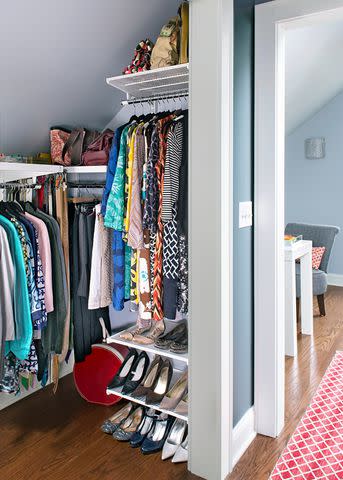
Each spring and fall, do CPR on your closet: Categorize, Purge, and Rearrange. Carefully consider each item in your closet. If it doesn't make you feel wonderful or look fabulous, it's time to pass it on. Put it in your donation box, and put that box in your car ASAP.
Organize Instruction Manuals
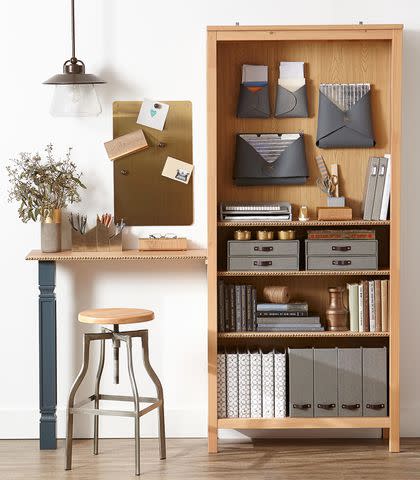
What do blenders and baby swings have in common? Thick wwner's manuals. File away these instruction books and warranty information in the same room as the item, and if you're storing multiples, organize the pile in a magazine holder. Staple the receipt and warranty to the cover of the manual. Or go paperless: Visit the manufacturer's website to view or download the instruction manual (hint: have the model number handy).
Designate Kitchen Zones
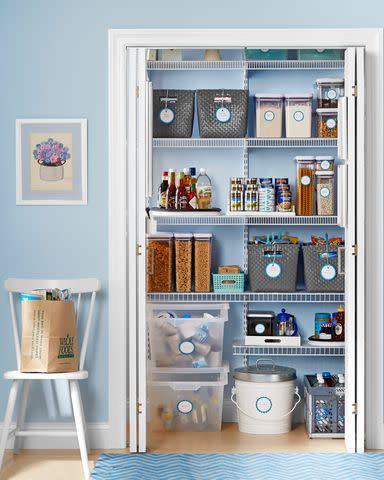
Create a list of all the tasks you regularly do in your kitchen, whether it's baking or making lunches. Then create a zone for each, says Kathi Burns, author of How to Master Your Muck. Designate a shelf for all of the essential supplies, including nonperishable foods and special tools or utensils, so you can easily grab what you need for the job.
Digitize Favorite Recipes
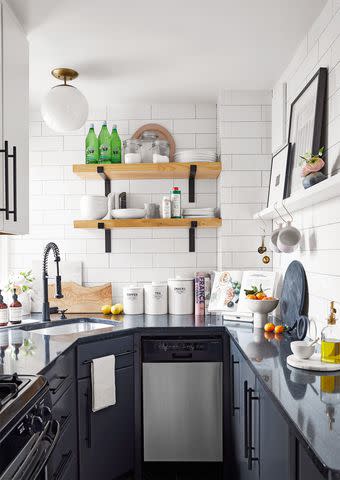
Are your cookbooks gathering dust? Scan and print the one or two recipes you use the most often, then donate the book, suggests Lorie Marrero, author of Clutter Diet. The same goes for recipes in magazines. Tear out the relevant pages, then recycle the rest. Slide the recipes into clear plastic pockets in a three-ring binder for a customized cookbook with plenty of room to grow. Another option: Scan and save all your favorite recipes to your phone using a digital app, like Recipe Keeper or CookBook.
Declutter Your Paper Piles
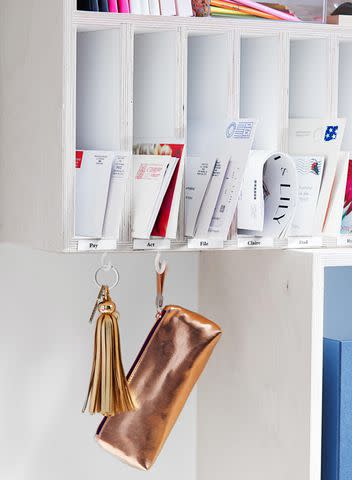
Papers have a way of multiplying, but you can set limits on their tendency to take over. "Designate a place where papers will go—on a tray, in a magazine rack, or in a basket—and when they no longer fit, it's time to move them to the recycling bin," says Stacey Platt, author of What's a Disorganized Person to Do? Remember to shred any mail with personal information before discarding.
Improve Cleaning-Day Efficiency
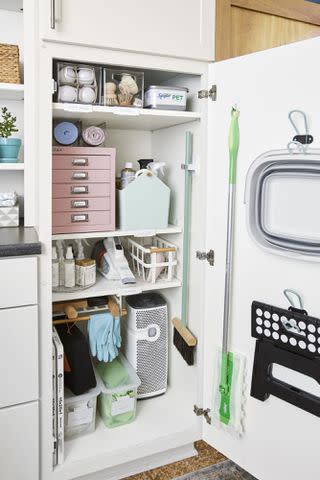
Think like a housecleaning professional. Cull your cleaning-product collection to five basics: all-purpose cleaner, glass cleaner, wood polish, abrasive cleaner for bathroom and kitchen, and floor cleaner. Then place one of each type into a caddy that you can carry around the house on cleaning day.
Target Problem Areas
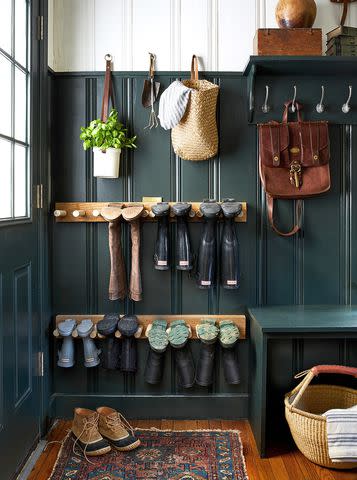
A system that's a natural extension of your habits is easier to keep than one that forces dramatic change. So set up solutions right where clutter collects, such as a labeled rack for each family member's shoes or a bookshelf by the door with trays for each person's sunglasses, keys, and other small items.
Make Organizing a Family Affair
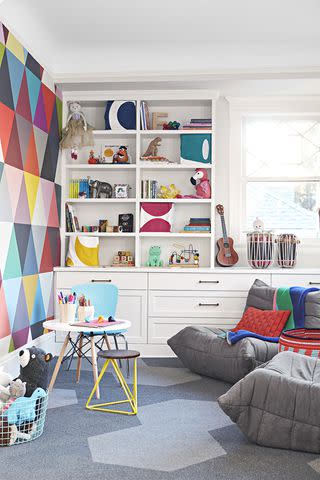
Every three months or so, reserve one Saturday morning for a family cleanout. Set a timer for 30 minutes, and task everyone with bringing things from their own spaces to donate or throw away. Box up donations and drop them off that day, then reward yourselves with lunch out.
Set Storage Criteria
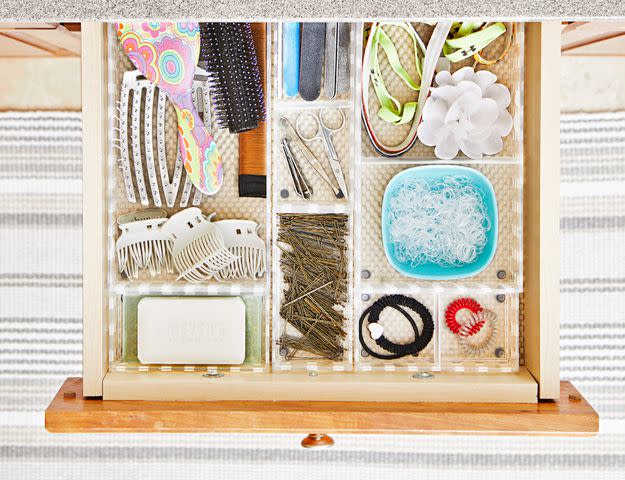
Designate the dividing line between "keep" and "toss" before you start sorting. For example, if you're weeding through a lipstick collection, make this rule: You'll keep the ones you wear most often or that are less than two years old, then toss the rest. That way, there's no "analysis paralysis" to slow down your decluttering.
Utilize the Area Behind Doors
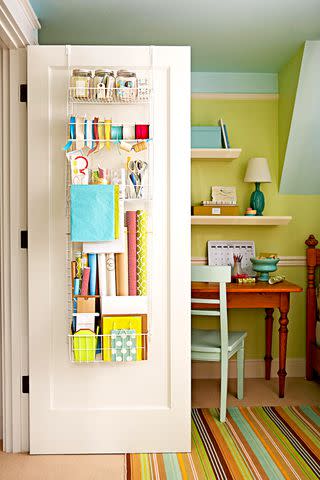
Look to the backs of doors and cupboards for bonus storage space. Shallow shelves, hooks, and over-the-door organizers make convenient spots for items without an obvious home. Lids for pots and pans, gift-wrapping materials, and shoes are all prime candidates for behind-the-door storage.
Regularly Donate Unwanted Clothing
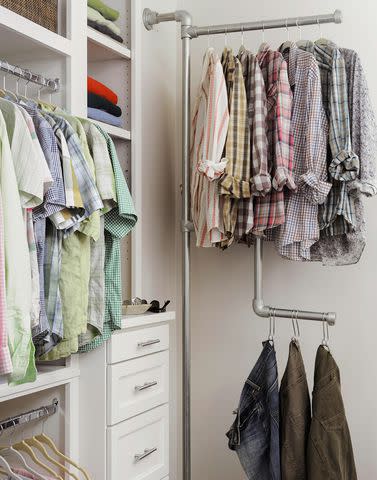
Keep a donation hamper in your closet, suggests Peter Walsh, organizing expert and author of Enough Already! Every two weeks, select an item of clothing you haven't worn in the past six months and throw it in. When the hamper is full, take it to a local charitable organization.
Streamline Sheets
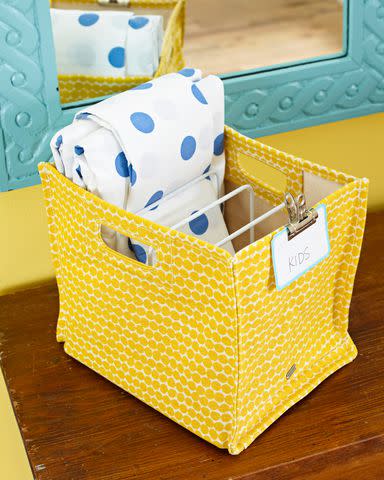
Organize sheets for each bedroom into designated bins. That way, finding the right linens for a specific room is a snap. Place a coated metal pan rack inside the bin to separate sets, so you can easily grab a set when it's time to refresh the beds.
Set Up a Command Station
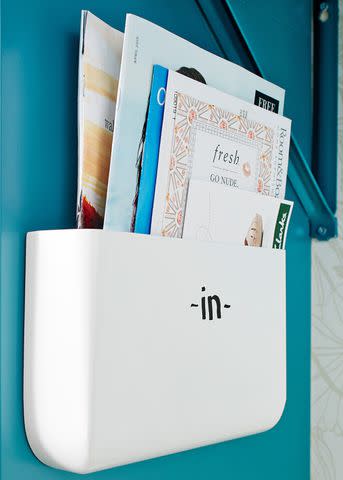
Hang an indoor mailbox in a central location—and commit to sorting through it regularly. Why not set a reminder to go through the box at least once a week? That means opening everything, paying bills, filing important correspondence, and recycling junk mail. Create a dedicated spot for frequently accessed papers, such as takeout menus, sports schedules, and phone directories.
:22 Important Document Organizer Solutions for Clutter-Free Spaces
Remember Reusable Bags
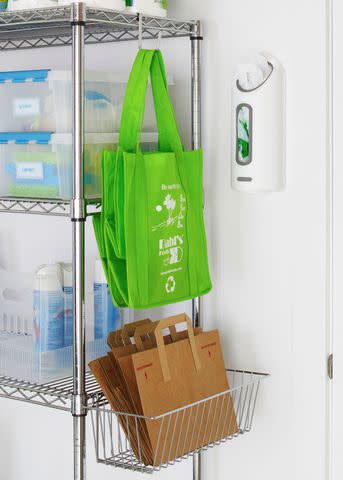
Never forget your reusable grocery bags again. As soon as you unload your latest haul, put the bags back in your car or hang them on a designated hook by the door. This tiny effort cuts down on clutter and saves you time when you're hurrying out the door.
Play a Decluttering Game
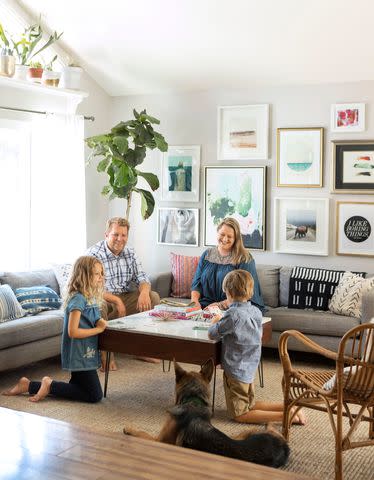
Make clutter-busting a family game. Write tasks on slips of paper and put them in a hat or basket. Each person chooses one, completes the task, then comes back for another. After 30 minutes, whoever has the most slips of paper earns a prize, like a no-chores day or control of the TV remote.
Designate a Donation Box
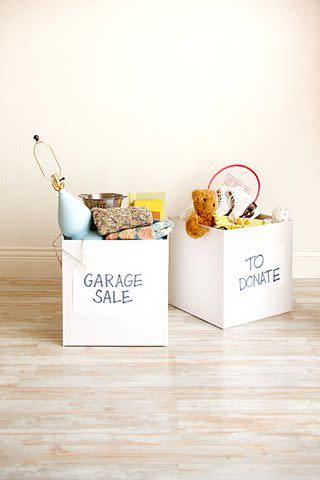
Practice organizational layaway. Set aside a box for things you're considering donating but aren't sure you're ready to give up. When the box is full, write the date on it and stow it in a closet or the garage. After one year, if you haven't needed or missed anything in the box, toss or donate its contents.
Be Honest About Usefulness
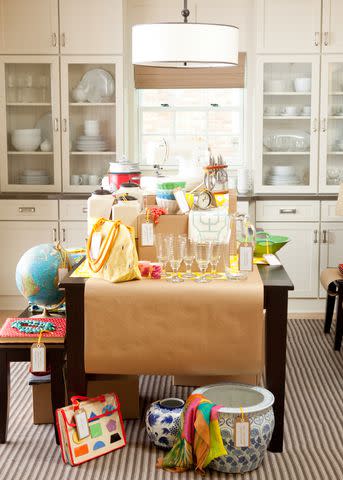
Appeal to your practical side when making organizational decisions. Claire Kurtz of The Well-Organized Woman suggests asking yourself three questions when trying to decide whether to keep something: "Do I love it?" "Do I use it?" "Could someone else use it?" If you no longer use or love an item, determine whether the item should be recycled, donated, or discarded.
Corral Coupons
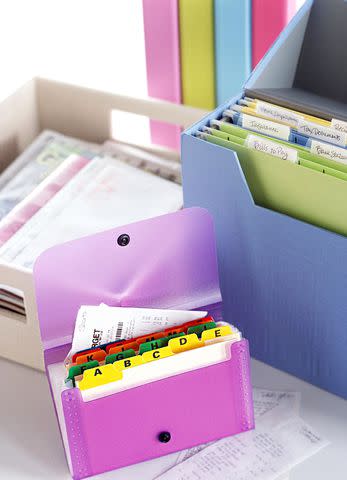
Invest in a tabbed expanding file folder to contain receipts and coupons. This puts everything you need for shopping at your fingertips. Label the tabs how you like—by store, by date, or by category—and make sure to regularly clean out expired coupons or receipts you no longer need.

